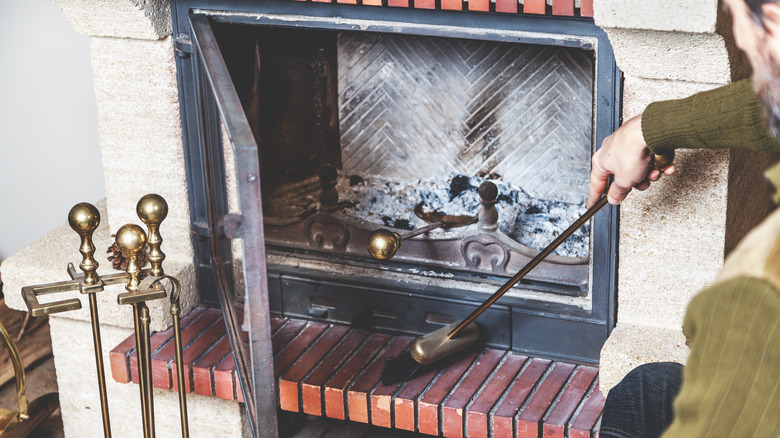The Pantry Ingredient That'll Leave Your Fireplace Soot-Free In Time For Spring
Few things are more relaxing than stretching out (or cuddling) in front of the fireplace to beat the winter chill. However, once the temperature soars and spring knocks on the door, you'll have to bid adieu to the roaring fires (at least until next winter). But before you do that, clear some time in your busy schedule to clean your fireplace. If you don't, the accumulated creosote might lead to preventable chimney fires. Moreover, the amassed creosote, soot, and other debris will lead to unpleasant odors in the following months. Fortunately, you can avoid chimney fires and ensure your fireplace is soot-free in time for spring with the help of a common pantry ingredient: cream of tartar.
Cream of tartar, or potassium hydrogen tartrate, is an acidic wine byproduct purified (after fermentation) into the signature white powder. This acidic ingredient is also a powerful cleaner that will make your fireplace shine anew. However, it's best used to spot clean small sooty areas, unless you bought cream of tartar in bulk and have yet to use it all.
Clean soot off your fireplace with cream of tartar
Begin by ensuring the fireplace is room temperature and there are no burning embers inside. A rule of thumb is to give the fireplace at least a day to cool down completely. Now, don a pair of gloves, protective goggles, and a face mask to prevent soot and other buildup from entering your air passage and settling in your lungs or irritating your skin. It's also a good idea to change into something you don't mind getting dirty, as well as cover your hair. Once you're suited up, lay down an old cloth (like a towel) to protect your knees and grab a broom.
Take out the fire grate, remove the burnt logs, and use the broom to sweep out residual ashes. Follow this up by sweeping the fireplace inside out to remove the accumulated soot. Next, run a specialized vacuum to clean up the mess, as the ash will damage a regular vacuum's motor. Dispose of the remnants carefully since you don't want the fine powder to become airborne.
After the fireplace is sufficiently free of soot and debris, combine 2 tablespoons of cream of tartar with a little water to create a paste-like consistency. Dip an old toothbrush in the paste and rub it against the soot stains. Let the acidic ingredient work its magic for five to 10 minutes before rinsing it off with warm water (or removing it with a brush) and patting it dry with a clean microfiber cloth.

